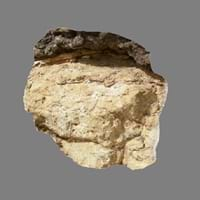Definition
Laterite rock is a type of Sedimentary rock which is rich in iron and aluminium, formed in hot and wet tropical areas
Pegmatite rock is a holocrystalline, intrusive igneous rock which is composed of interlocking phaneritic crystals
Discoverer
Francis Buchanan-Hamilton
R. J. Hauy
Etymology
From Latin later brick, tile + -ite1
From Greek pegma, pegmat which means- thing joined together + -ite
Class
Sedimentary Rocks
Igneous Rocks
Sub-Class
Durable Rock, Soft Rock
Durable Rock, Hard Rock
Group
Not Applicable
Plutonic
Other Categories
Fine Grained Rock, Opaque Rock
Coarse Grained Rock, Opaque Rock
Texture
Earthy, Massive, Porphyritic
Pegmatitic
Color
Brown, Buff, Red
Black, Brown, Cream, Green, Grey, Pink, Red, Rust, Silver, White, Yellow
Durability
Durable
Durable
Appearance
Rough and Banded
Layered, Banded, Veined and Shiny
Interior Uses
Decorative Aggregates, Flooring, Interior Decoration
Decorative Aggregates, Flooring, Interior Decoration
Exterior Uses
As Building Stone, As Facing Stone, Garden Decoration
As Building Stone, As Facing Stone, Paving Stone
Other Architectural Uses
Curbing
Curbing
Construction Industry
Cobblestones, for Road Aggregate, Landscaping, Roadstone
As Dimension Stone, Building houses or walls, Construction Aggregate, for Road Aggregate, Landscaping
Medical Industry
Not Yet Used
Not Yet Used
Antiquity Uses
Artifacts, Monuments, Sculpture
Artifacts, Sculpture, Small Figurines
Commercial Uses
An Oil and Gas Reservoir, Source of bauxite, Used in aquariums
Creating Artwork, Jewelry, Source of corundum, tourmalines, beryls and topaz
Types
Not Available
Granite Pegmatite, Gabbro Pegmatite and Diorite Pegmatite
Features
Is one of the oldest rock, Very fine grained rock
Generally rough to touch, Is one of the oldest rock, Source of corundum, tourmalines, beryls and topaz
Archaeological Significance
Monuments
Used
Not Yet Used
Famous Monuments
Data Not Available
Not Applicable
Famous Sculptures
Data Not Available
Data Not Available
Pictographs
Used
Not Used
Petroglyphs
Used
Not Used
Formation
Laterite is a type of sedimentary rock which is generally a reddish weathering product of basalt.
Pegmatite rock is holocrystalline, intrusive igneous rock which is formed by partial melting and dewatering during the process of metamorphism.
Mineral Content
Aluminum Oxides, Biotite, Hematite, Hornblade, Iron Oxides, Manganese Oxides, Micas, Muscovite or Illite, Plagioclase, Pyroxene
Apatite, Beryl, Feldspar, Fluorite, Garnet, Lepidolite, Quartz, Silica, Spodumene, Topaz
Compound Content
Aluminium Oxide, CaO, Iron(III) Oxide, FeO, Potassium Oxide, MgO, MnO, Sodium Oxide, Phosphorus Pentoxide, Silicon Dioxide, Titanium Dioxide
Aluminium Oxide, CaO, Iron(III) Oxide, FeO, Potassium Oxide, Magnesium Carbonate, MgO, Phosphorus Pentoxide
Types of Metamorphism
Not Applicable
Burial Metamorphism, Cataclastic Metamorphism, Contact Metamorphism, Hydrothermal Metamorphism, Impact Metamorphism, Regional Metamorphism
Types of Weathering
Biological Weathering, Chemical Weathering
Biological Weathering, Chemical Weathering, Mechanical Weathering
Types of Erosion
Chemical Erosion, Water Erosion, Wind Erosion
Chemical Erosion, Coastal Erosion, Glacier Erosion, Sea Erosion, Water Erosion, Wind Erosion
Grain Size
Fine Grained
Medium to Coarse Grained
Fracture
Conchoidal
Conchoidal
Porosity
Highly Porous
Less Porous
Luster
Dull
Grainy, Pearly and Vitreous
Compressive Strength
Not Available
Cleavage
Not Applicable
Perfect
Toughness
Not Available
2.1
Specific Gravity
Not Available
2.6-2.63
Transparency
Opaque
Translucent to Opaque
Density
Not Available
2.6-2.65 g/cm3
Resistance
Heat Resistant, Pressure Resistant
Heat Resistant, Impact Resistant, Pressure Resistant
Deposits in Eastern Continents
Asia
India
China, India, Iran, Japan, Nepal, North Korea, Russia, Saudi Arabia, South Korea
Africa
East Africa, Western Africa
South Africa
Europe
England, Romania, Scotland
Austria, France, Greece, Ireland, Italy, Netherlands, Slovakia, Spain, Turkey, Ukraine
Others
Not Yet Found
Not Yet Found
Deposits in Western Continents
North America
Canada, USA
Canada
South America
Not Yet Found
Brazil
Deposits in Oceania Continent
Australia
Central Australia, Western Australia
New South Wales, Queensland, South Australia, Western Australia
All about Laterite and Pegmatite Properties
Know all about Laterite and Pegmatite properties here. All properties of rocks are important as they define the type of rock and its application. Laterite belongs to Sedimentary Rocks while Pegmatite belongs to Igneous Rocks.Texture of Laterite is Earthy, Massive, Porphyritic whereas that of Pegmatite is Pegmatitic. Laterite appears Rough and Banded and Pegmatite appears Layered, Banded, Veined and Shiny. The luster of Laterite is dull while that of Pegmatite is grainy, pearly and vitreous. Laterite is available in brown, buff, red colors whereas Pegmatite is available in black, brown, cream, green, grey, pink, red, rust, silver, white, yellow colors. The commercial uses of Laterite are an oil and gas reservoir, source of bauxite, used in aquariums and that of Pegmatite are creating artwork, jewelry, source of corundum, tourmalines, beryls and topaz.










